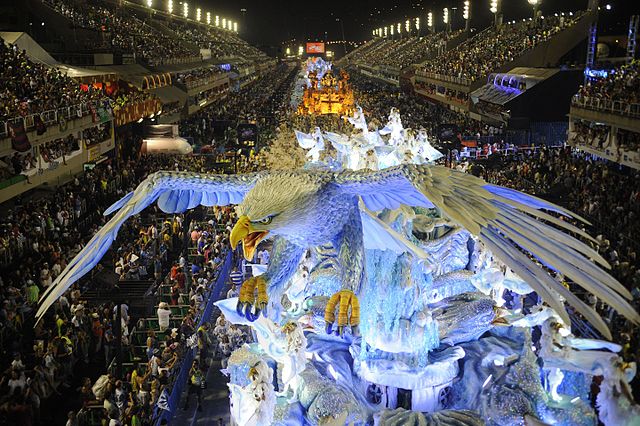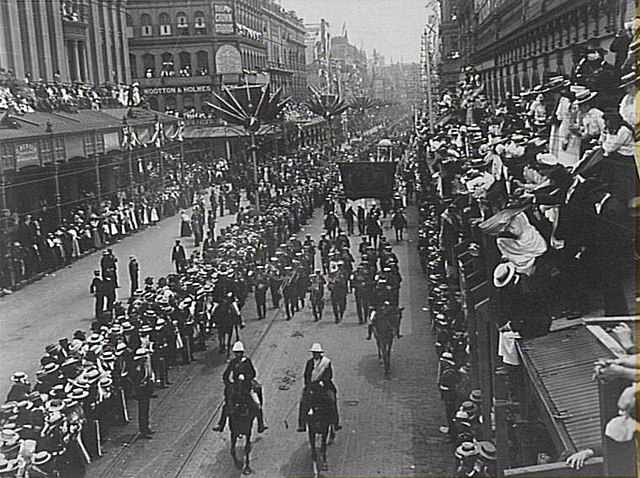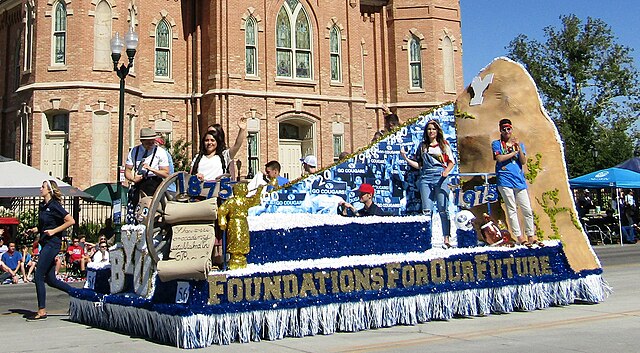A float is a decorated platform, either built on a vehicle like a truck or towed behind one, which is a component of many festive parades, such as those of Carnival in Rio de Janeiro, the Carnival in São Paulo, the Carnival of Viareggio, the Maltese Carnival, the Macy's Thanksgiving Day Parade, Mardi Gras in New Orleans, the Gasparilla Pirate Festival, the 500 Festival Parade in Indianapolis, the United States Presidential Inaugural Parade, and the Tournament of Roses Parade. For the latter event, floats are decorated entirely in flowers or other plant material.
A float at Rio Carnival, 2014
French Quarter Float
Volunteers working on the 2007 Star Wars floats
'Booming city', the winning float of the Zundert flower parade 2008.
A parade is a procession of people, usually organized along a street, often in costume, and often accompanied by marching bands, floats, or sometimes large balloons. Parades are held for a wide range of reasons, but are usually celebrations of some kind.
A Rio Carnival parade in Rio de Janeiro, Brazil in 2005
A parade in Sydney to celebrate the Federation of Australia in January 1901
A parade float for Brigham Young University in the Freedom Festival Grand Parade in Provo, Utah
2013 World Championships in Athletics Parade of Nations at the Luzhniki Stadium in Moscow, Russia








